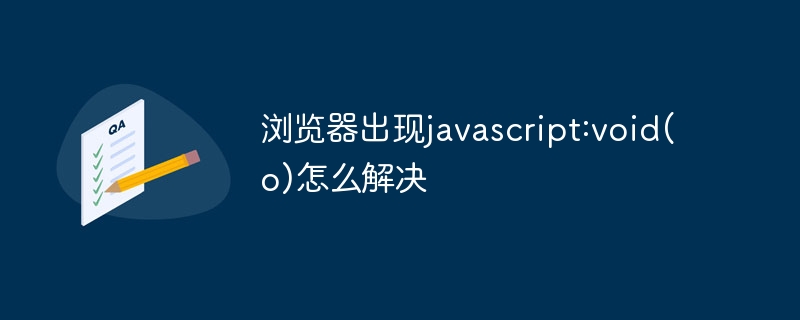Methods to resolve javascript:void(o) errors in your browser include checking and disabling browser extensions that may conflict. Scan and remove malware that may be causing the error. Clear your browser cache and cookies to eliminate outdated scripts. Reset browser settings to restore default settings. Contact the site administrator to report the error and ask for assistance.

How to solve the problem of javascript:void(o) in your browser
When your browser shows javascript: void(o), which can be caused by browser extensions, malware, or website script errors. Here are some steps to resolve this issue:
1. Check browser extensions
- Browser extensions may conflict with website scripts, causing javascript:void (o) Error.
- Disable all browser extensions and reload the page to see if the error disappears.
- If the problem is solved by disabling the extension, enable the extensions one by one until you find the extension causing the problem.
2. Scan for malware
- Malware can also cause javascript:void(o) errors.
- Use antivirus software to scan your computer and remove any detected malware.
- Restart your computer and reload the page to see if the error disappears.
3. Clear browser cache and cookies
- Outdated cache and cookies may cause script errors.
- Clear your browser's cache and cookies, then reload the page.
- In Chrome, go to Settings > Privacy & Security > Clear browsing data and select "Cached images and files" and "Cookies and other site data."
4. Reset browser settings
- If the above steps don’t work, you can try to reset the browser settings.
- This will return your browser to its default settings and remove all customizations and extensions.
- In Chrome, go to Settings > Advanced > Reset settings and remove harmful software.
5. Contact the site administrator
- If all of these steps do not resolve the issue, there may be an issue with the site script.
- Contact the site administrator to report an error and request assistance.
The above is the detailed content of How to solve the problem of javascript:void(o) in the browser. For more information, please follow other related articles on the PHP Chinese website!






